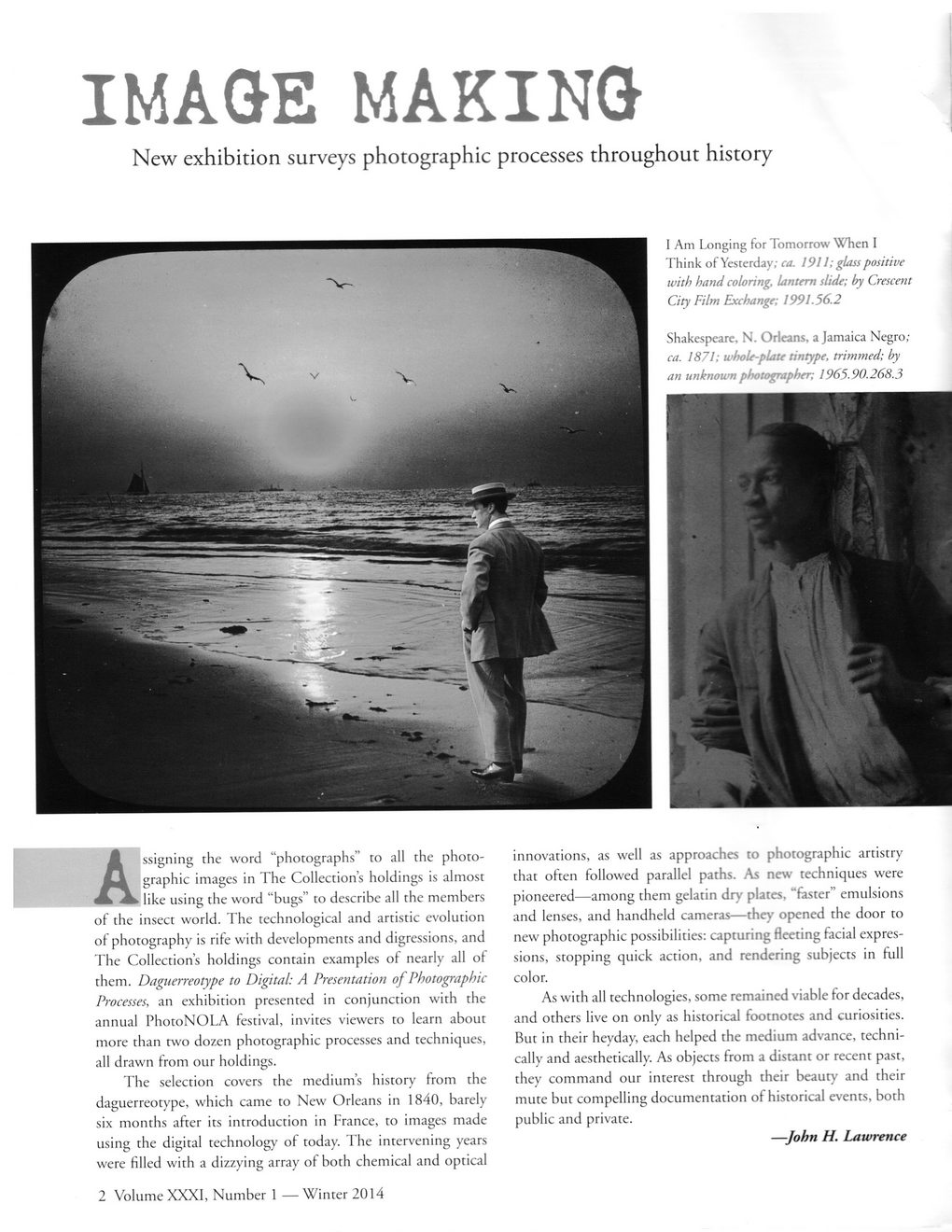This text was obtained via automated optical character recognition.
It has not been edited and may therefore contain several errors.
IMAGE MAKING New exhibition surveys photographic processes throughout history Sssigning the word “photographs” to all the photographic images in The Collection’s holdings is almost like using the word “bugs” to describe all the members of the insect world. The technological and artistic evolution of photography is rife with developments and digressions, and The Collection’s holdings contain examples of nearly all of them. Daguerreotype to Digital: A Presentation of Photographic Processes, an exhibition presented in conjunction with the annual PhotoNOLA festival, invites viewers to learn about more than two dozen photographic processes and techniques, all drawn from our holdings. The selection covers the medium’s history from the daguerreotype, which came to New Orleans in 1840, barely six months after its introduction in France, to images made using the digital technology of today. The intervening years were filled with a dizzying array of both chemical and optical innovations, as well as approaches to photographic artistry that often followed parallel paths. As new techniques were pioneered—among them gelatin dry plates, “faster” emulsions and lenses, and handheld cameras—they opened the door to new photographic possibilities: capturing fleeting facial expressions, stopping quick action, and rendering subjects in full color. As with all technologies, some remained viable for decades, and others live on only as historical footnotes and curiosities. But in their heyday, each helped the medium advance, technically and aesthetically. As objects from a distant or recent past, they command our interest through their beauty and their mute but compelling documentation of historical events, both public and private. —John H. Lawrence 2 Volume XXXI, Number 1 — Winter 2014

New Orleans Quarterly 2014 Winter (02)